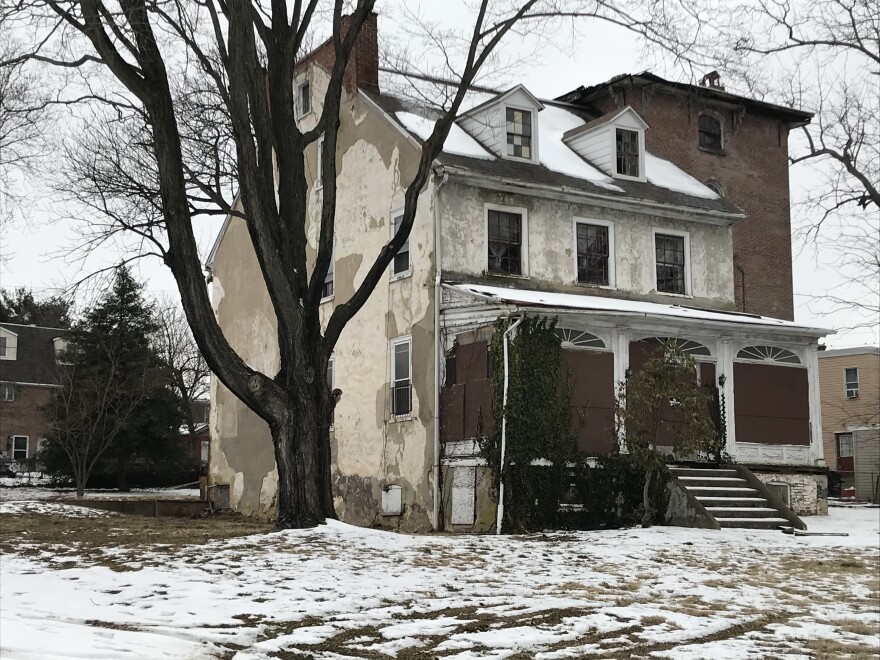There’s a lot that’s known about the Dr. John A. Brown House and its owners, and there may be pieces of history about the house and its surroundings yet to be discovered.
Brown, for whom the mansion and Wilmington’s Browntown neighborhood are named, was the fourth owner of the house on Seventh Avenue and lived there for just over seven years, from 1848 to 1856, but he was “undoubtedly the most flamboyant of persons” to occupy it, according to a 1979 nomination of the property for inclusion on the National Register of Historic Places written by Dean Nelson, a historian with the state Division of Historical and Cultural Affairs.
According to the National Register nomination, dates to about 1800, when John Smith, a tanner who raised livestock, acquired 100 acres that included where the house would be built. At the time, the land was outside the Wilmington city limits. In 1819 Smith lost the land at a sheriff’s sale caused by his failure to pay a $98 debt, and Jeremiah Woolston, a prominent Wilmington banker and industrialist, bought the 100 acres for $9,875. Woolston built the house between 1819 and 1827 at the top of a hill just east of what is now Maryland Avenue.

“It was originally a stone mansion. Something that large and built of stone would have been quite a statement in the 1820s,” says Michael Emmons, assistant director of the University of Delaware’s Center for Historic Architecture and Design.
In 1835 Woolston sold the house and its 100 acres to John Gallagher, a Navy captain who had served as a lieutenant in the War of 1812 under Capt. Stephen Decatur. In recognition of his naval service, Gallagher named the house “the Anchorage” (and there is an Anchorage Street in Browntown about a block from the house). When Gallagher died in 1842, the property passed to his son, Dr. Charles Gallagher, and his widow.
Brown, who acquired the house is 1848, is believed to have added a pair of brick Italian Villa towers to the north end of the original two-and-one-half story granite side hall structure.
According to the National Register nomination, Brown came to Wilmington from New England where he had founded infirmaries in Boston, Massachusetts, and Providence, Rhode Island. A promoter of medicinal tonics, Brown was reportedly the originator of a product called “1776 Root Beer,” which was manufactured in Boston, Providence, New York City, Philadelphia, Baltimore and other locations, including Wilmington.
He sold the mansion in 1856 and, four years later, built an even larger residence, with more than 50 rooms, that was called “the Living Home.” This structure, torn down many years ago, served as a resting place for ailing Union soldiers during the Civil War and as a private home “for the care of the feeble, sick and insane,” according to the register nomination.
History buffs and preservation advocates say that discussion of the mansion’s possible demolition has stoked fresh interest not only in Brown but also in Browntown and the surrounding area.
"It was originally a stone mansion. Something that large and built of stone would have been quite a statement in the 1820s." - UD Center for Historic Architecture and Design's Michael Emmons,
Some 50 years before the house was built, George Washington would have led his army north on what is now Maryland Avenue during the 1777 Philadelphia campaign, and south, with French General Jean-Baptiste Rochambeau on their march to Yorktown, Virginia, in 1781 for the final battle of the Revolutionary War.
There is an underground spring downhill from the mansion that has caused some water problems in the neighborhood, says Nancy Pierkowski, who has lived in Browntown for more than 60 years.
Mike McGrath, president of Preservation Delaware Inc., which has set up a task force to fight to preserve the mansion, wonders whether the soldiers used that spring as a source of fresh water when they marched through the area.
Vince Watchorn, a Wilmington resident who has been researching the city’s African American history, says his examination of 19th century links between Wilmington and the African nation of Liberia revealed an African American enclave called “New Liberia” near the Brown mansion. He also notes that Woolston, who built the house, was known as an abolitionist.
Watchorn and Pierkowski wonder whether there might be a connection between the neighborhood and the Underground Railroad. “Harriet Tubman was not that far from here [at the Wilmington Riverfront],” Pierkowski says. “To me, that’s not much of a stretch.”
If the house is torn down, “we would lose part of Wilmington’s history without having the opportunity to interpret and understand it,” Watchorn says. “Understanding our history is important to building our future.”







